Over the last week, SV Darmstadt 98 has clinched their place in the next iteration of the Bundesliga after a 1-0 win over FC Magdeburg.
After a six-year absence from Germany’s top division, Darmstadt will look to ensure that their spell in the Bundesliga is as long as it is fruitful over the next season.
Led by Torsten Lieberknecht, the side has scored a healthy amount of goals this season
, with 50 goals scored, and has the best defence in the league, conceding just 29 goals in 33 games.However, when looking at underlying numbers such as xGA, Darmstadt has been overperforming defensively.
The model states that the chances Darmstadt has given up should have led to them conceding around 40 goals this season.
However, xGA
and xG are not perfect metrics, and it would be dangerous to reach a conclusion just from consulting this metric in any tactical analysis.
However, when analysing Darmstadt for this scout report, prior to looking at the data, it became apparent that the execution of certain aspects in their defensive system may be problematic
. This analysis aimsto highlight and explain why.
SV Darmstadt 98 Defensive structure
On paper, Darmstadt fielded a 3-4-1-2 formation with this changing to either a 5-2-3 or 5-3-2 and in some cases a 5-2-1-2 defensively.
Darmstadt’s defensive line is relatively high.
However, the side is not extremely aggressive with their press.
As can be seen in the image below, Darmstadt is structured in a 5-2-3 formation defensively
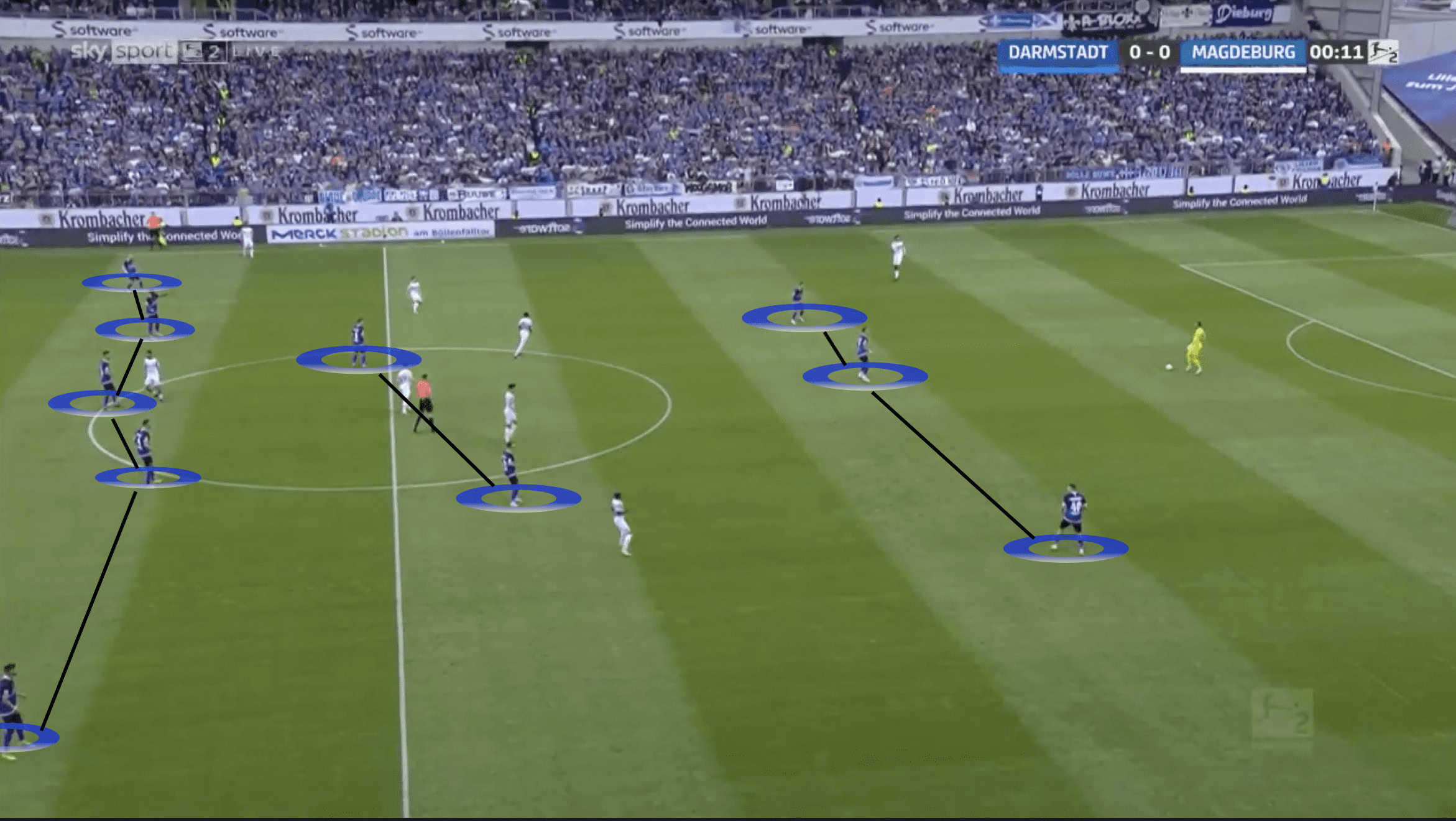
Within Torsten Lieberknecht’s structure, the first line does not initially orient their positions to the opposition’s centre-backs.
Rather, the frontline looks to position themselves primarily in relation to the space behind them so as to prevent direct passes into the midfield, which has the effect of the opposition playing out to the wide areas.
As a result of this, the initial pressing trigger for Darmstadt’s front line is a pass to the centre-backs.
From these positions, opposition passes to full-backs and wingers also in the wider areas are more likely, with the threat of these passes, as well as passes into this area, being an additional pressing trigger for Darmstadt’s wing-backs.
This can be seen in the image below.
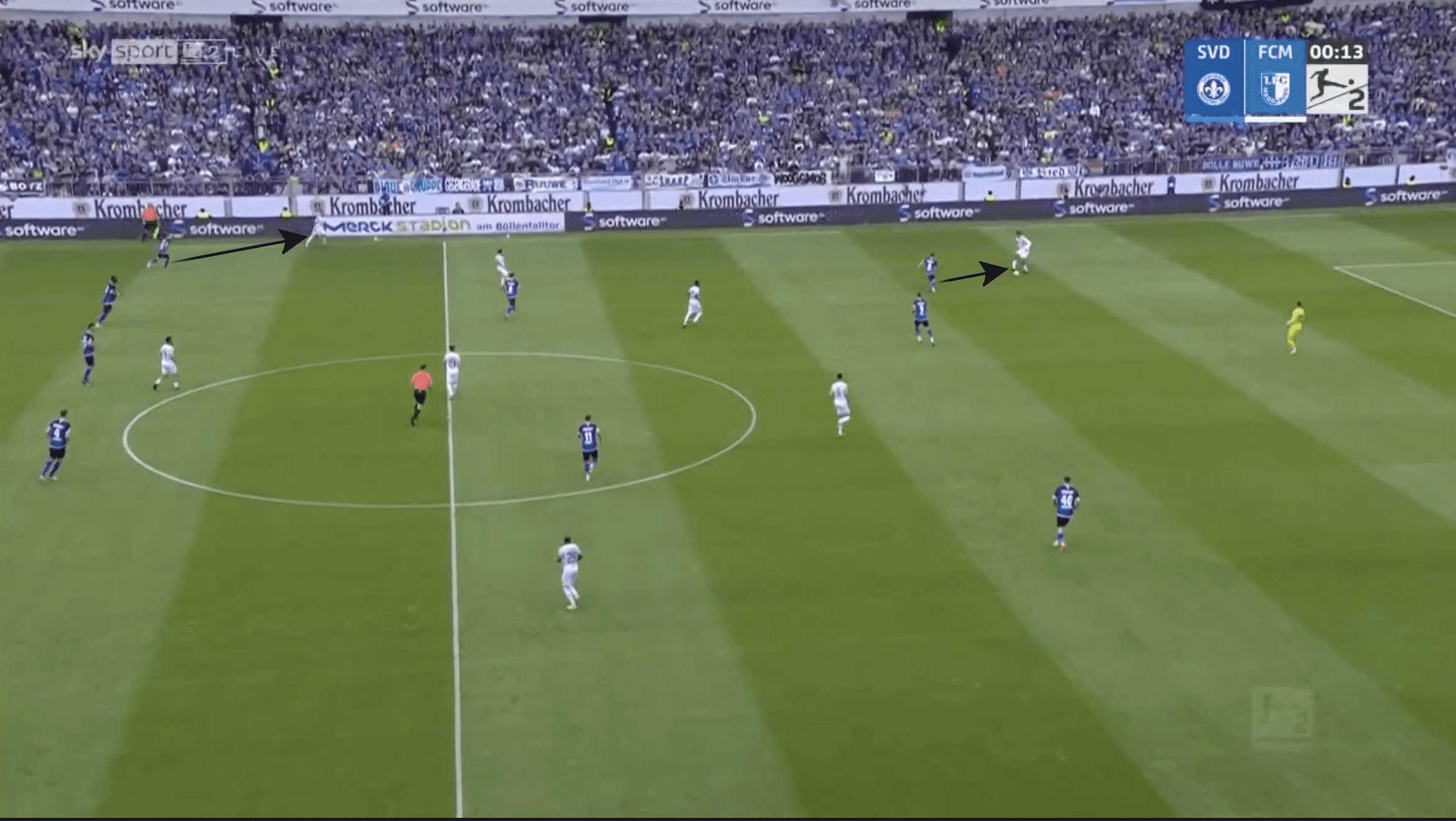
This creates situations in which Darmstadt can use the touchline to suffocate the opposition in the wide areas, win back the ball and then transition.
In these scenarios, it is also important to mention the role of the back five, which shifts across well whenever a wing-back is triggered to press.
Darmstadt’s second line of defence in higher areas is oriented to the position and movement of the opposition midfielders, which can be seen in the image below, with Darmstadt in this game pressing with a front two in the first line and three midfielders behind them
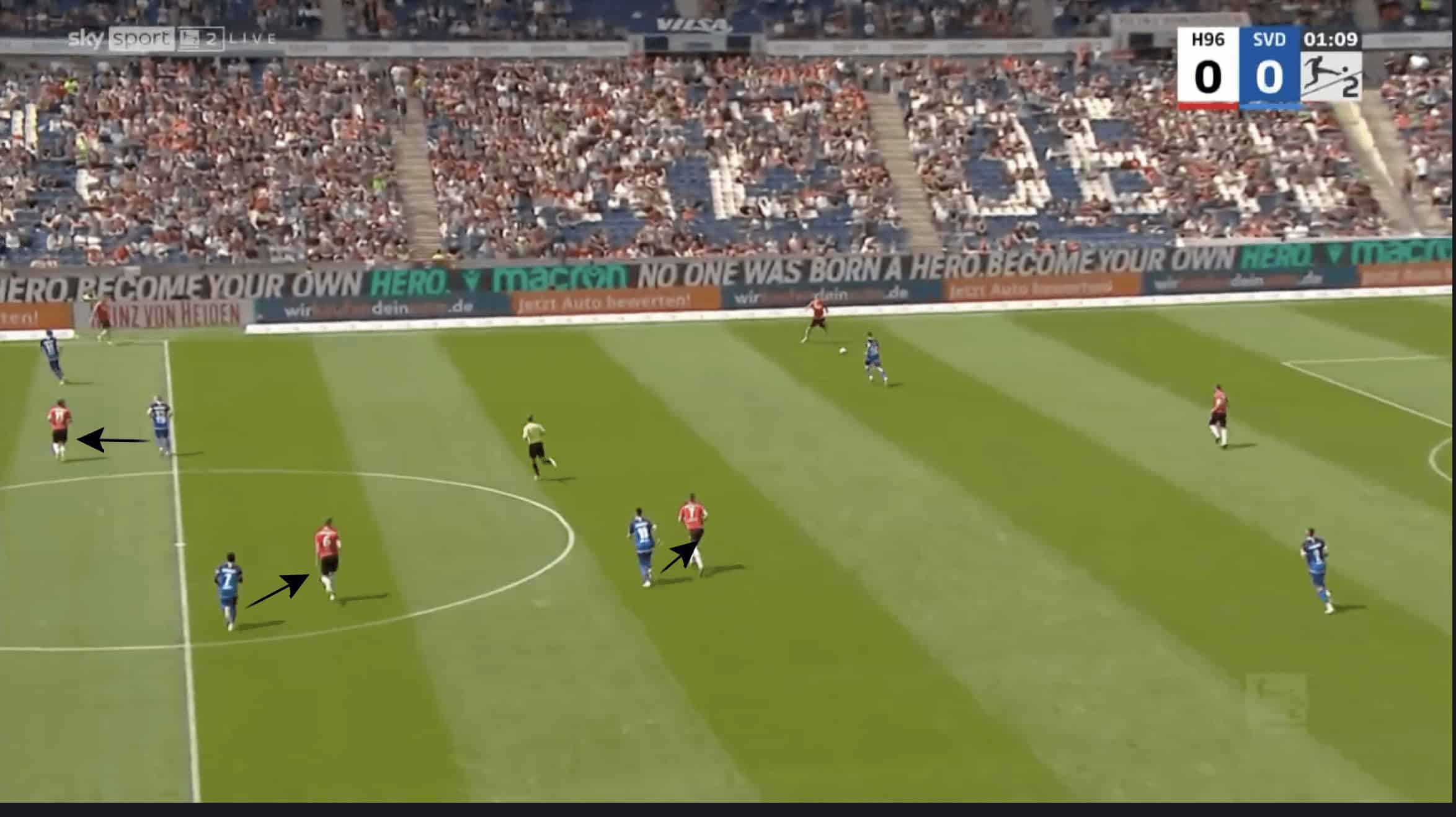
Systemic frailties
Even with the man-oriented nature of their midfield and the triggers of their first line of defence, Darmstadt’s common issue is accessing wide areas when the ball is played out wide.
In the example below, in their game against Hannover, Torsten Lieberknecht’s tactics chose to use two players in their first line of defence.
Hannover’s back three were spread out across the width of the pitch in this instance, which resulted in Darmstadt’s front two, Philip Tietz and Filip Stojilković, having to cover large distances every time their pressing actions were triggered.
Hannover’s wingbacks were positioned high up the pitch, limiting Darmstadt’s wingbacks’ availability to engage in the press.
As a result, on many occasions, Hannover’s centre-backs were able to circulate the ball at the back with ease and advance with the ball into wide areas.
This circumstance cannot be attributed solely to Darmstadt’s having one fewer player than Hannover in their first line of defence.
The contributing factor to the issue discussed is that, at times, Darmstadt’s second line may be too focused on orienting their position to opposition midfielders, which limits their adaptability to adjust their position to the most significant threat at the time. The effects of this are seen in the example below.
Instead of Tietz pressing the recipient of the pass, Braydon Manu, the “midfielder” highlighted, could have pressed the ball carrier, with Stojilković and Mathias Honsak covering this action.
However, Darmstadt does not consistently cover and support a pressing player.
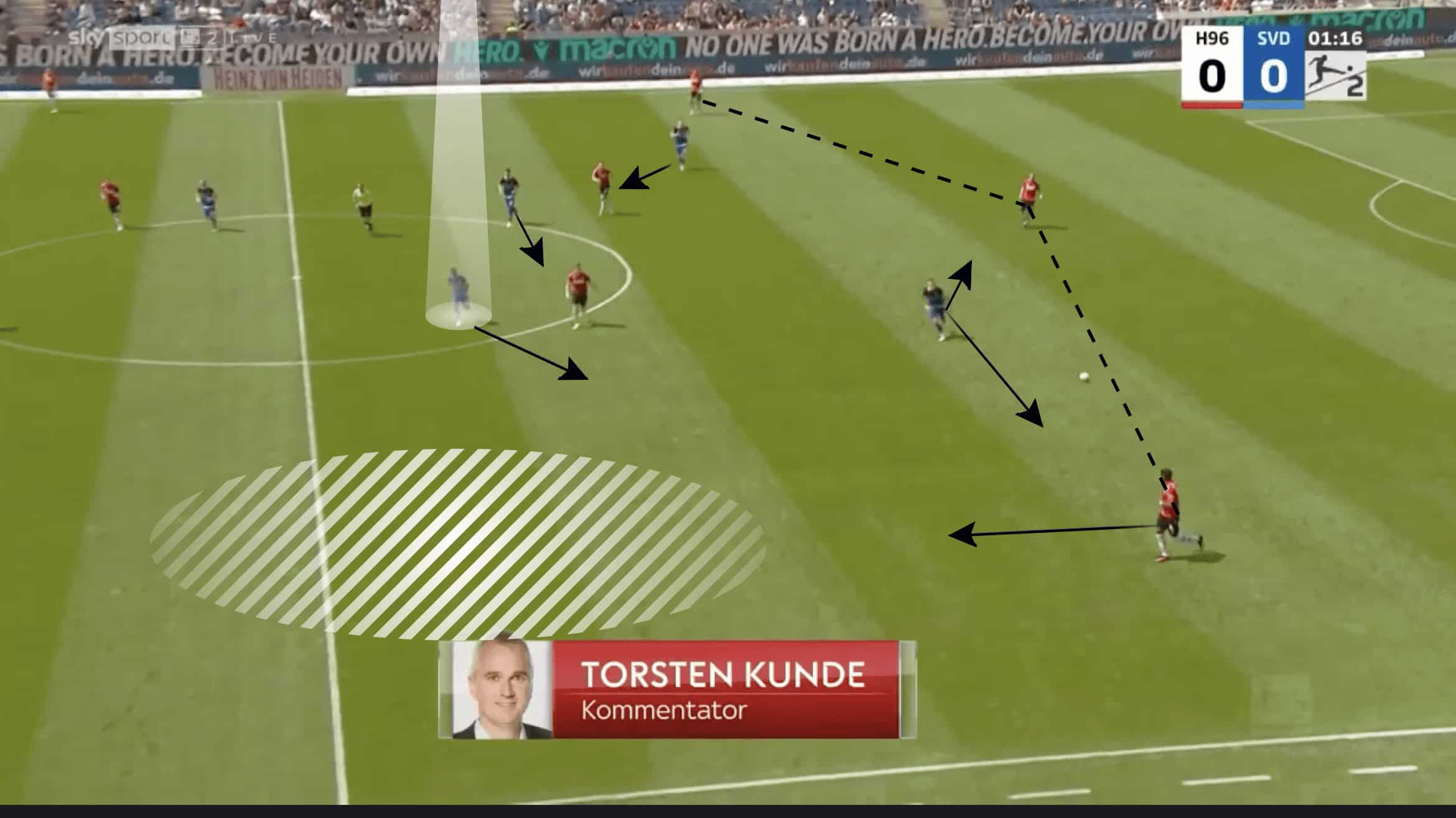
In their game against Magdeburg, Darmstadt used a 5-2-3 in defence.
Due to the only two midfielders on the second line, players on the front line must adapt to support pressing actions.
With only two midfielders in the second line, it becomes more difficult for the second line to protect space in the centre whilst still being able to engage in pressing actions in the wide areas.
In the example below, after Marvin Mehlem, who is part of the front three, presses the opposition centre-back, the two midfielders look to adjust their positions to protect space in the centre.
As a result, Magdeburg’s midfielder is left free, with Tietz orienting his position to Magdeburg’s auxiliary centre-back instead of dropping deeper and covering the midfielder.
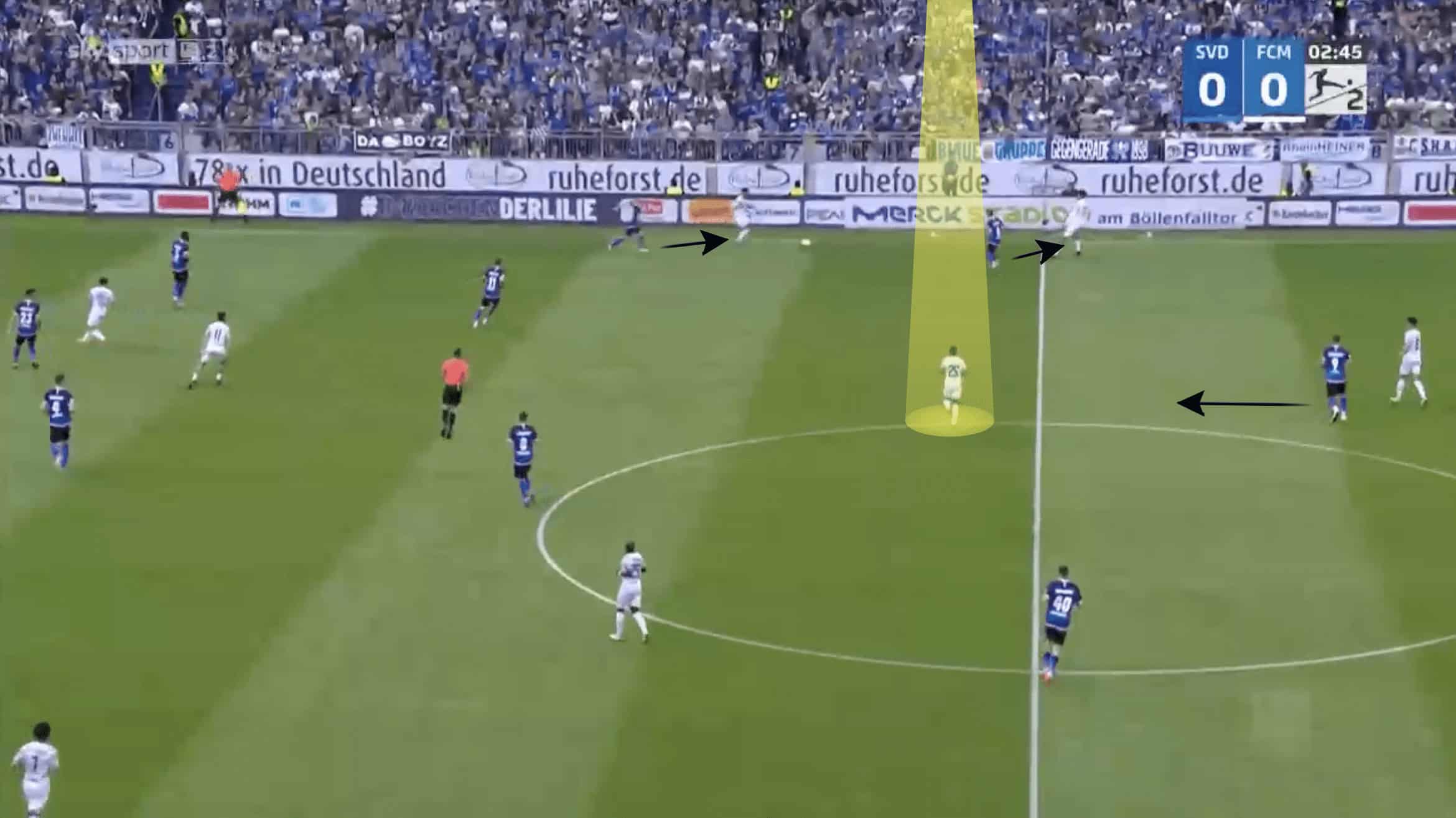
Another similar situation to the example above can be seen below.
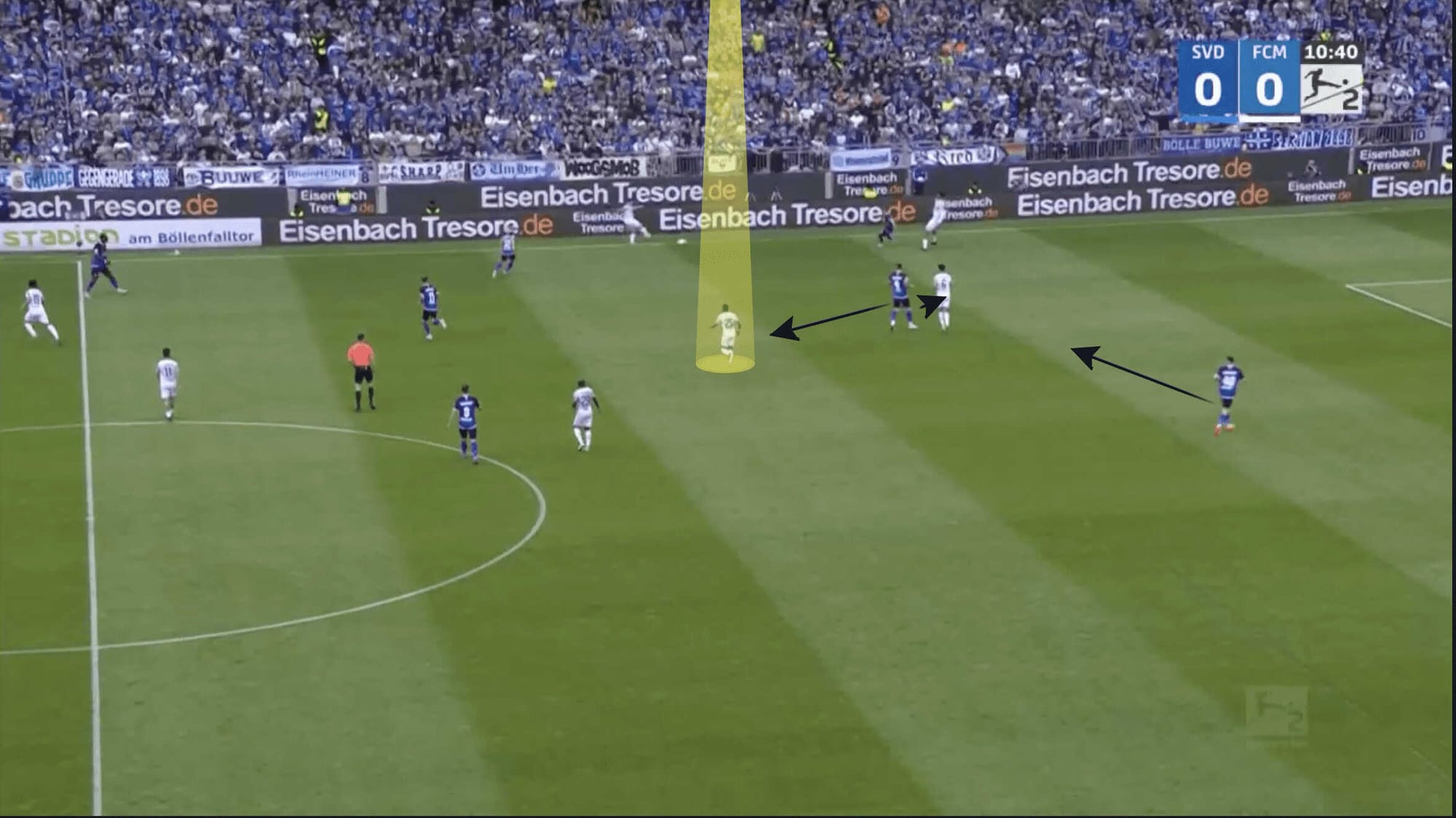
The concerns around covering and supporting other teammates’ pressing actions also trickle down into Darmstadt’s defensive half.
As can be seen in the example below, Darmstadt’s two midfielders in the 5-2-3 move towards the wide areas in order to cover the Magdeburg players in this area.
As a result, the centre is left relatively exposed.
However, Mehlem, on the far left-hand side, starts adjusting his position so that he could potentially press the Magdeburg centre-back on the far right and not towards the Magdeburg midfielder in free space in the centre.
As a result, Fabian Schnellhardt begins to adjust his position to the free opposition midfielder in the centre.
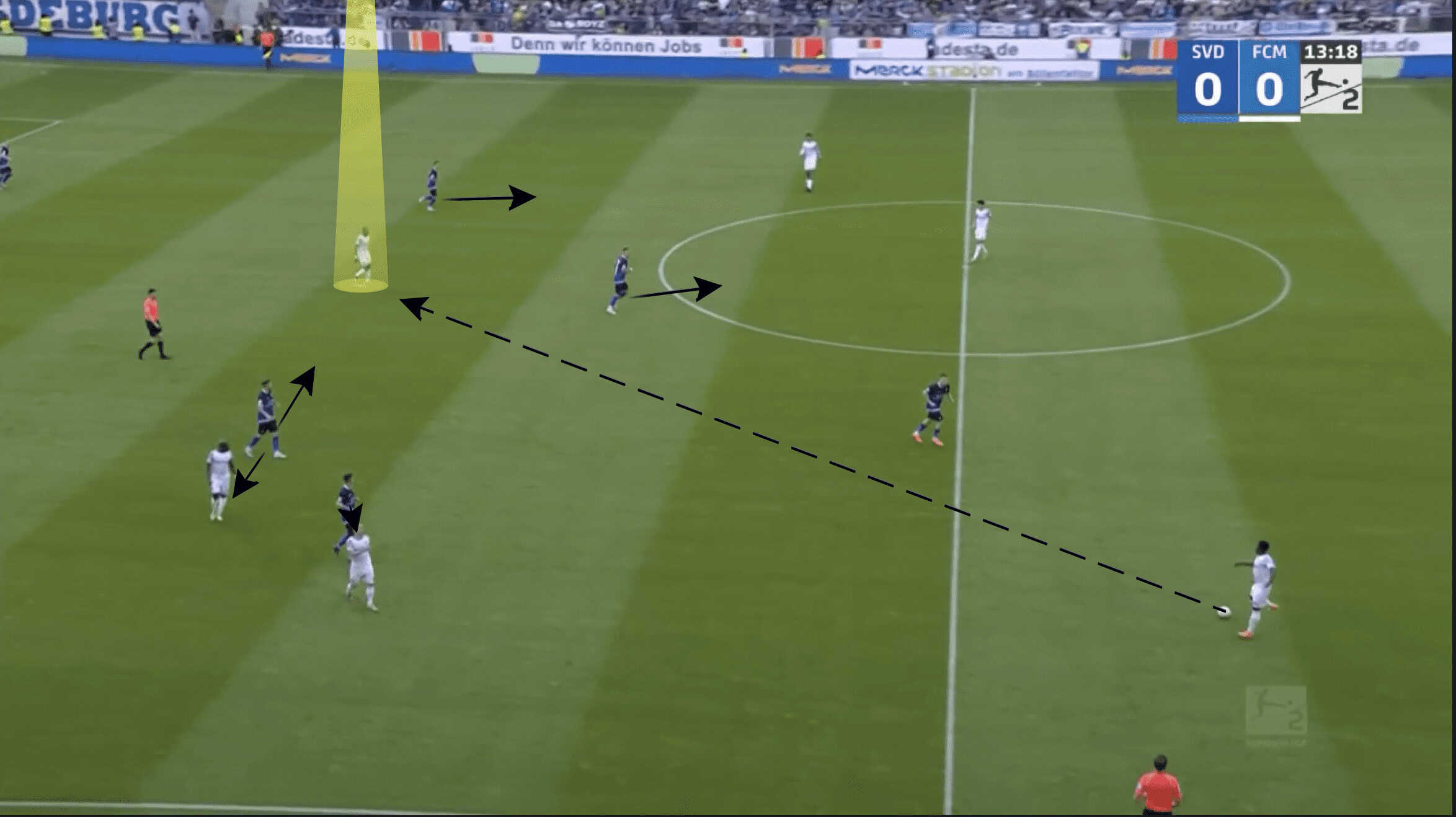
Moments later, after the pass from the opposition centre-back to the free midfielder was deflected, the effects of Darmstadt’s previous actions can be seen below.
In the previous example, Schnellhardt began to move to the centre to cover the opposition midfielder instead of Mehlem.
Seconds later, after a miskick from the opposition centre-back, the ball once again ends up in the wide area.
However, Schnellhardt’s previous action means that he is no longer in a position to move to the wide area.
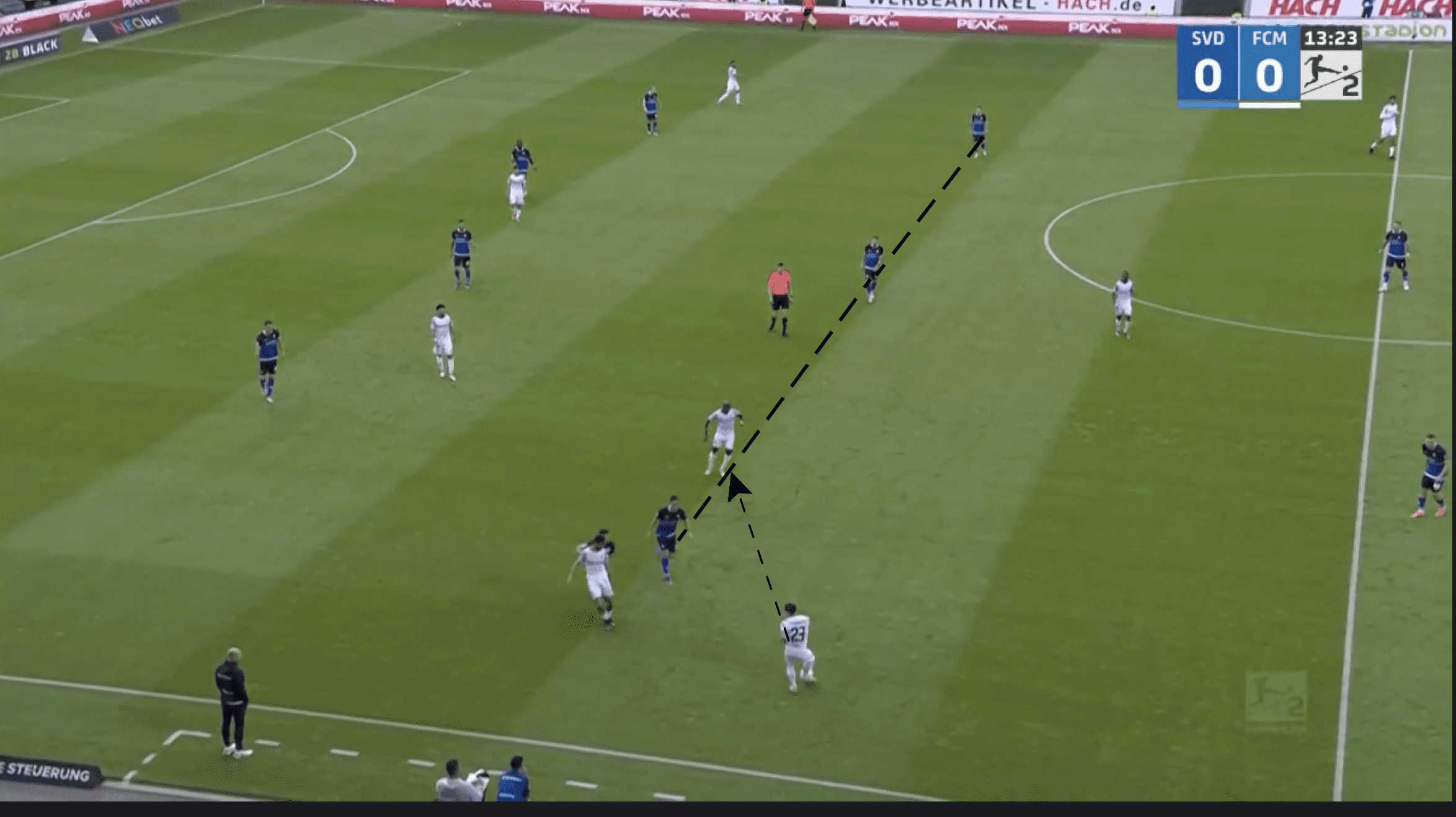
In addition to this, whether playing with a two-man midfield or three, the problem is that midfielders in the second line do not regularly track movements behind them or support their back line in the final third.
In addition, players in the first line sometimes do not drop deeper to support the other two lines of defence.
This can be seen in the example below.
In this instance, an opposition player is able to receive the ball without the threat of pressure from any angle.
Schnellhardt is put in a difficult position as he has to protect the space in the centre, which prevents him from being able to apply pressure on the ball carrier.
At the same time, an opposition player begins making a run behind the midfield line, but Mhelem does not drop even deeper to cover this run.
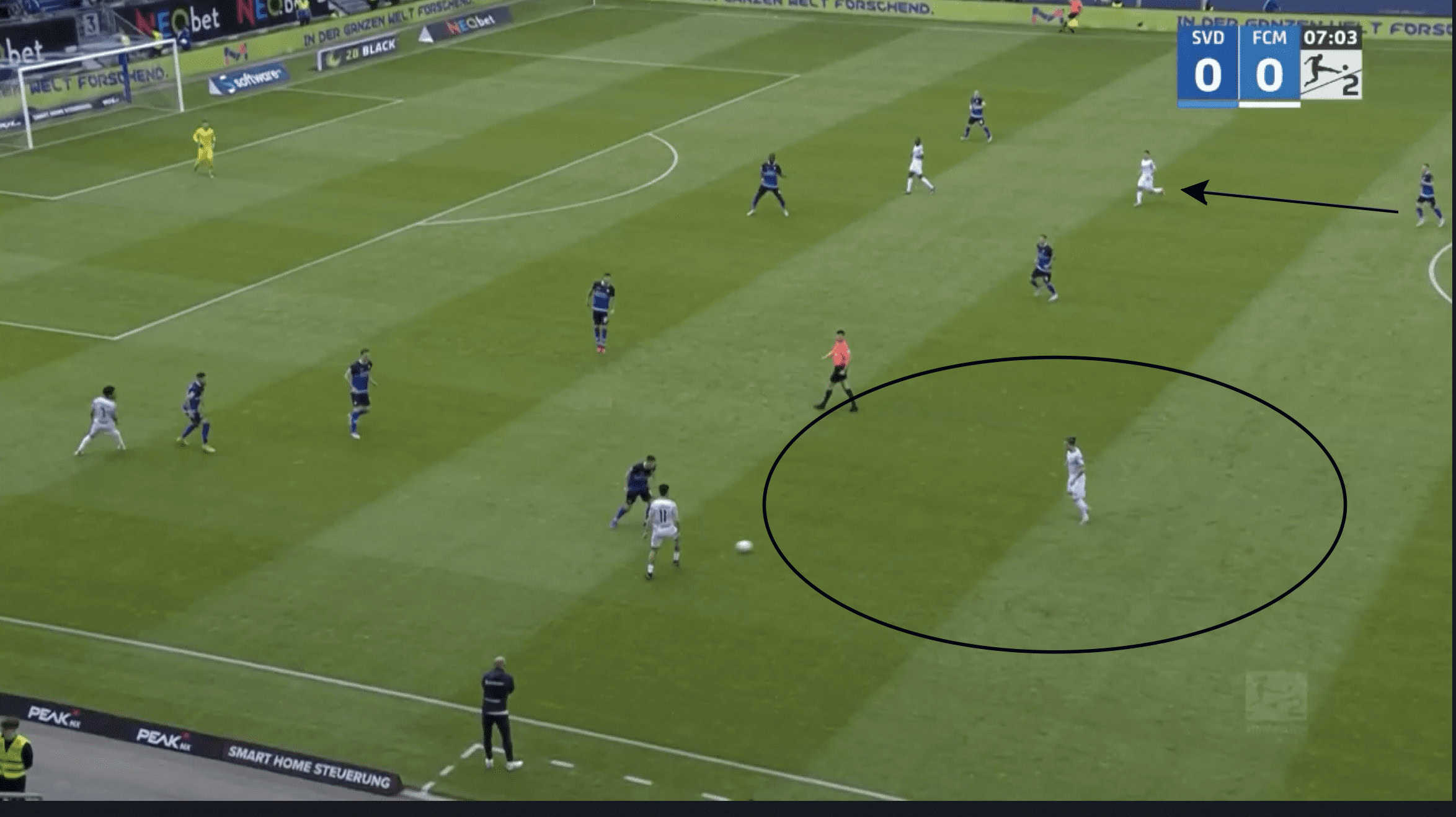
As a result, the opposition ball carrier had the opportunity to play two dangerous passes.
They could pass to the player in front of the box or play a ball over the top, with the ball over the top leading to a shooting opportunity.
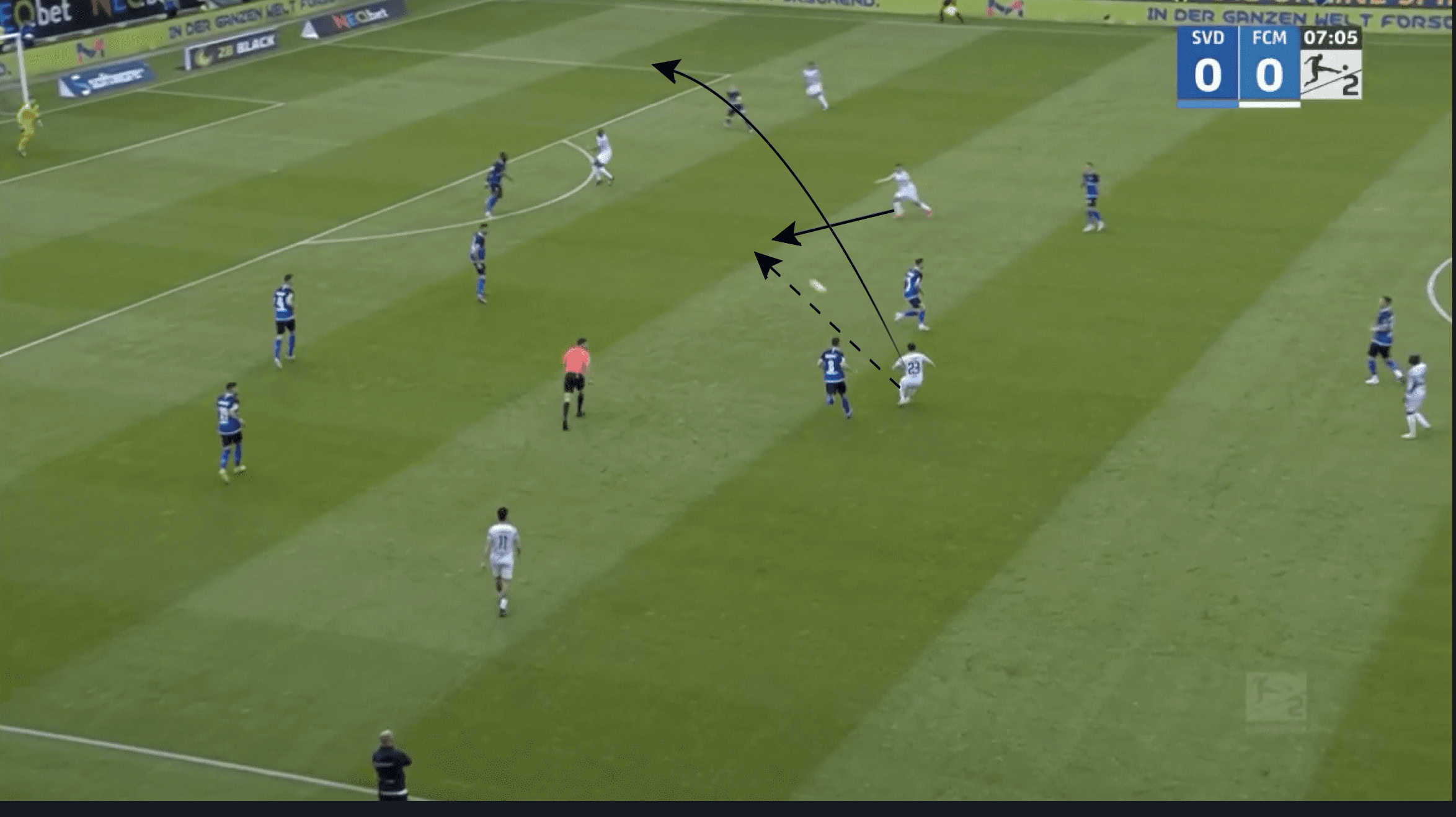
The example below shows another example of an absence of midfield support, this time with a three-man midfield.
After progressing play through the centre, the opposition switches the ball to the left-hand side, and as a result, Fabian Holland, the holding midfielder, begins to move towards the left-hand side.
However, the other two in the midfield and the front two do not drop deeper to support the defensive line.
Due to this, space is left in the centre, and no one is available to track the opposition players moving into the box.
This results in a 2v1 on the far side of the box.
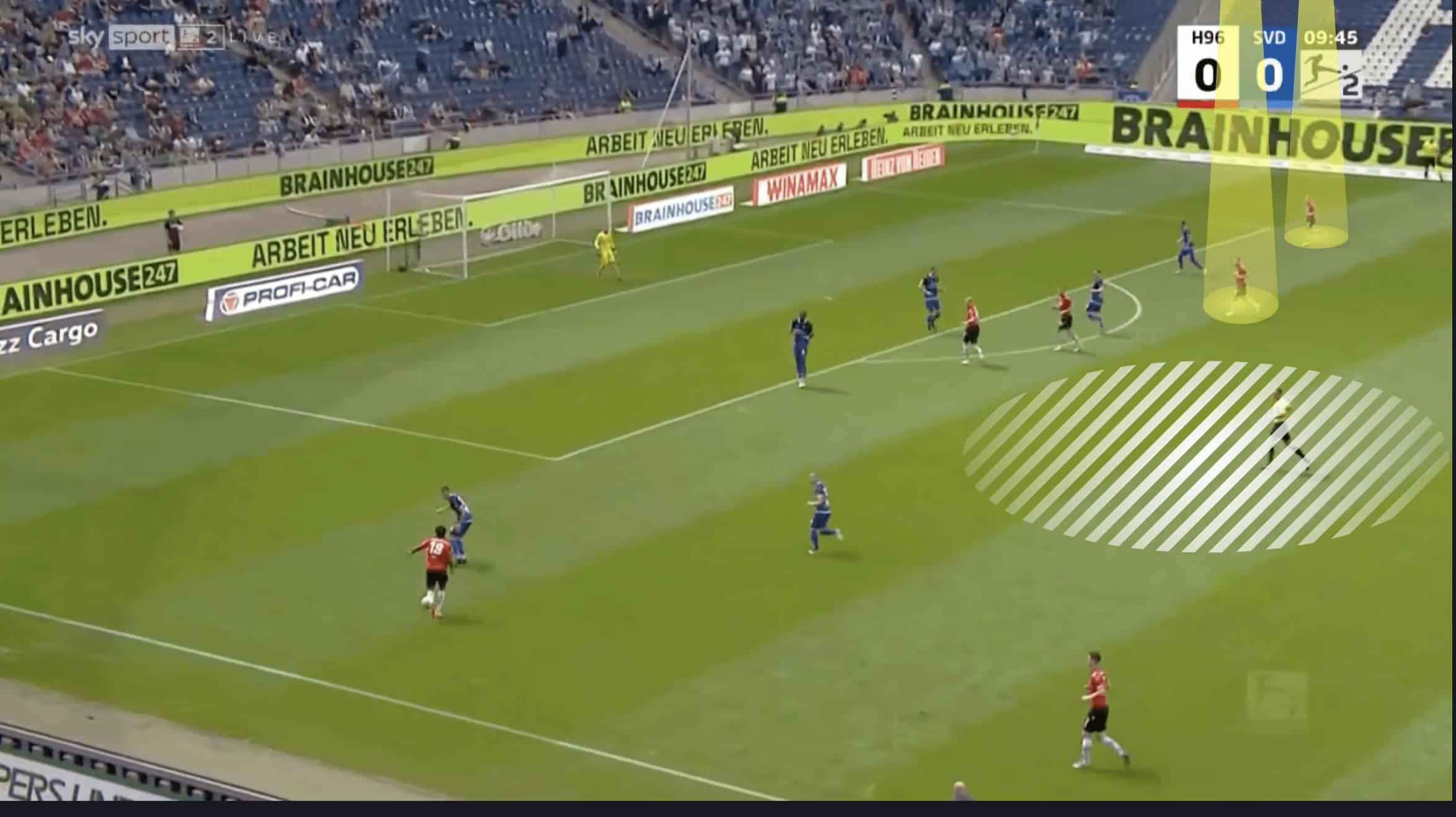
Hannover were able to take advantage of this and score their opening goal.
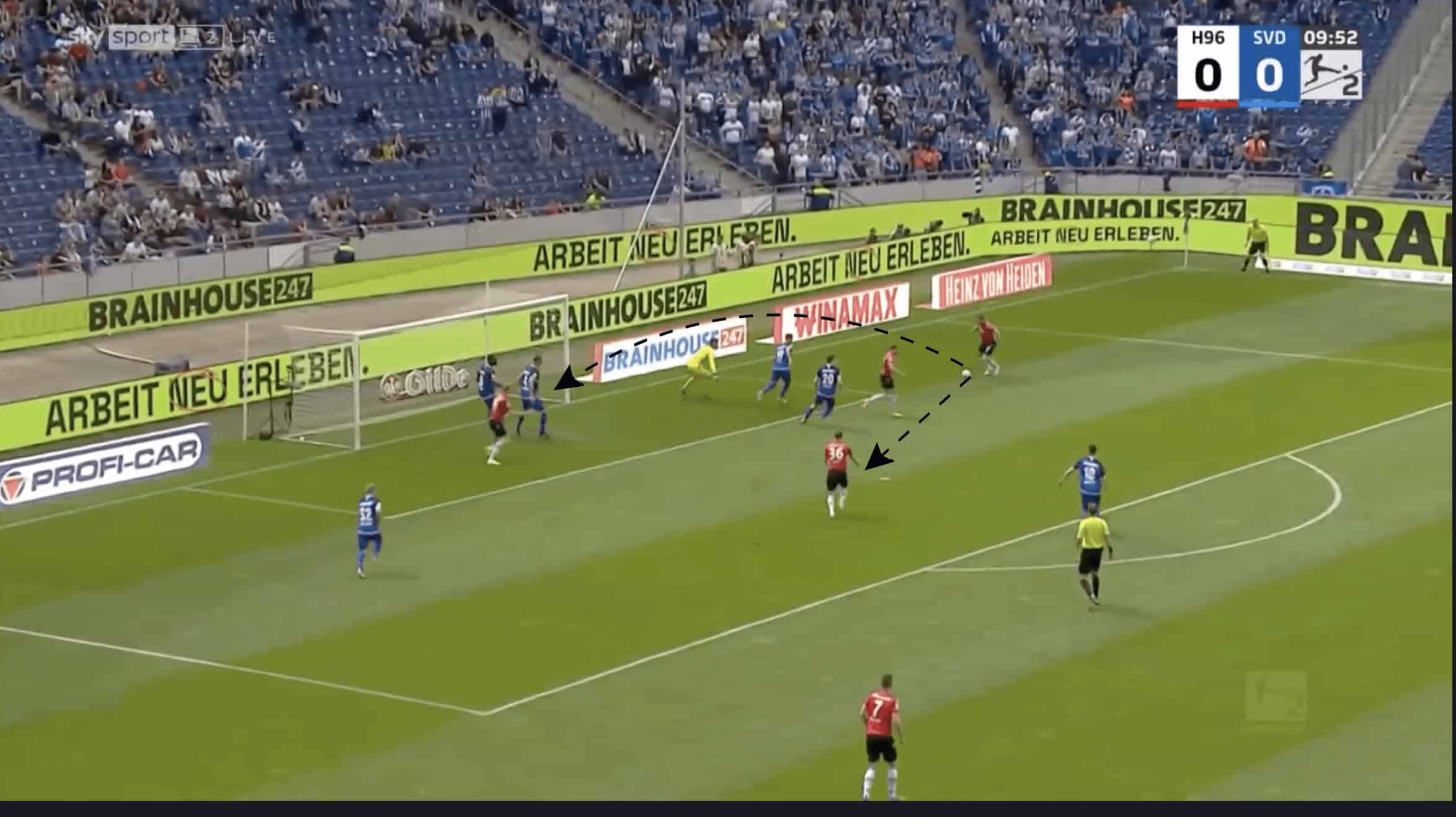
With the lack of midfield support in the final third, players in the backline often have to step out and engage with opposition players.
As seen in the example below, Mathias Honsak is unaware of an opposition player behind him who receives the ball.
Then, Jannik Müller has to step out of the backline to engage the opposition player.
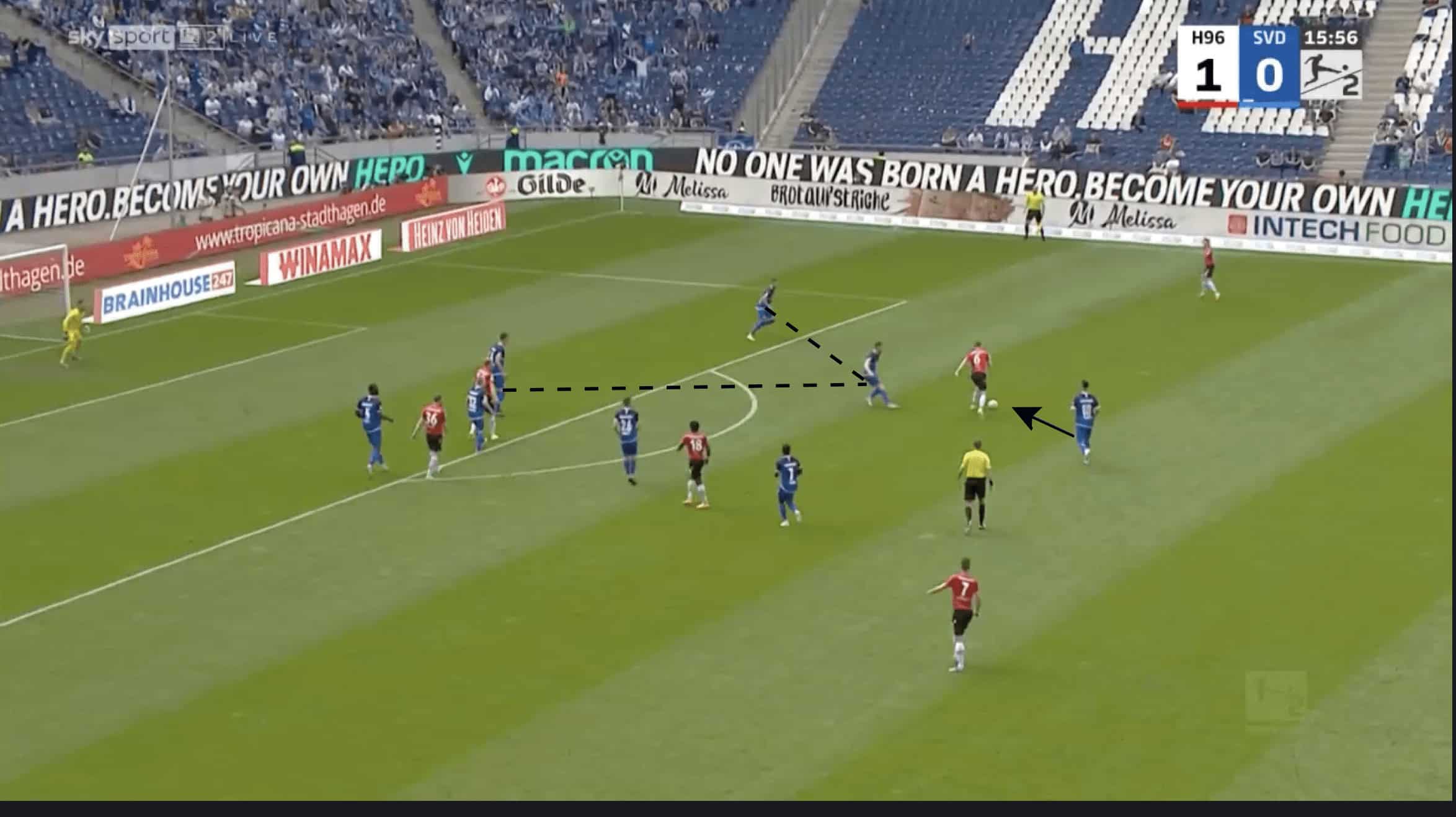
From his earlier position, Honsak does not adjust to the movements of the opposition player and so Jannik Müller has to engage the player after beginning to move back into the back line.
This stretches the defensive line in the box and creates space for a cut-back, with both midfielders highlighted not supporting Müller’s action to mitigate the risk.
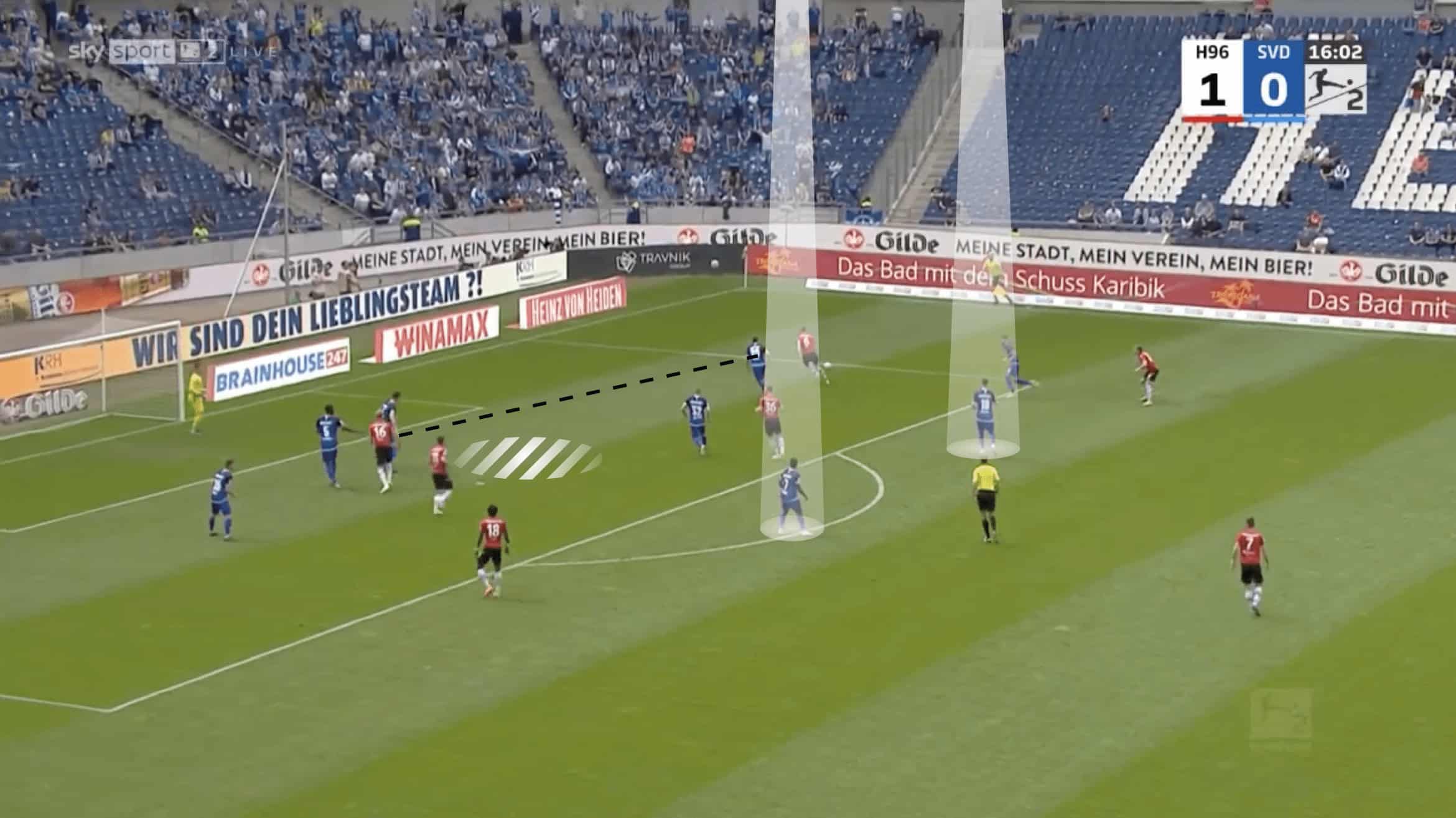
Conclusion
Darmstadt have worked relentlessly through the season and have been rewarded for their efforts.
The next season will require even more commitment
, as the side will have to face the likes of Borussia Dortmund, Bayern Munich,and other German giants.
This article has
highlighted some potential concerns about Darmstadt’s defensive tactics, structure, and actions thatneed to be ironed out before the next season.





Comments